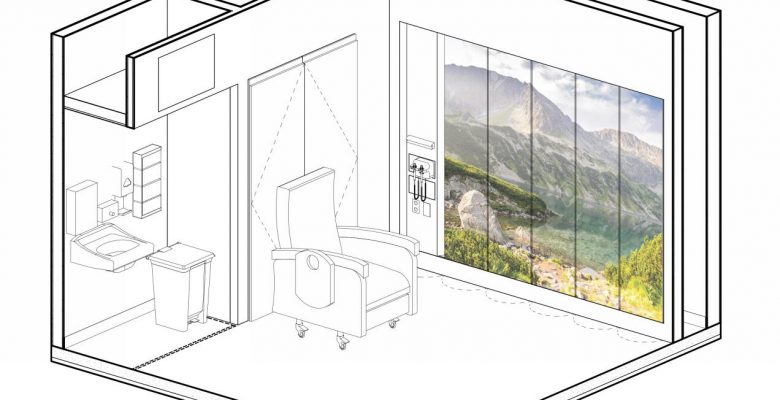This article explores how a responsive, acuity adaptable emergency room design can actively contribute to patient well-being along the continuum of care without sacrificing operational efficiencies. Increasing medical knowledge, prevalence, and social awareness of behavioral health issues have made it imperative to design therapeutic spaces that respond to the whole person, in addition to medical treatment needs. The method for conducting this qualitative study included historical review of behavioral health facilities, expert interviews, bedside care-team simulations, and the observational study of existing facilities. The Perkins+Will team met with an ED director, Nurse managers, Behavioral Health Medical Director, a Lean and Six Sigma expert, and conducted observational studies of existing conditions at multiple sites. The result of this study is a protectED room design that includes architectural solutions to address patient medical and behavioral health acuity needs. The design utilizes architecture as a tool to support patients in the same compassionate language as the care teams that treat patients and not simply an apathetic undersigned room to hold them until they can be admitted. It is recognized that staff skill-mismatch, inpatient psychiatric bed availability, and other complex factors will impact patient care and flow through the emergency department.
This article originally appeared in Vol 09.01 of the Perkins+Will Research Journal. CLICK HERE to see the whole article.

